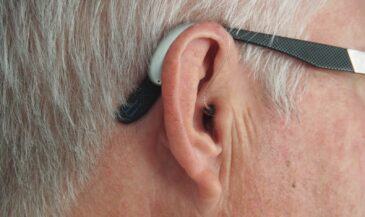By Christopher Kent, D.C., FCCI and Patrick Gentempo, Jr., D.C.
Medical practitioners seem to be obsessed with the diagnosing and naming of specific “conditions,” while often overlooking the underlying cause. This has resulted in a myopic assessment of patients which could be partially responsible for medical malpractice being the third leading cause of preventable death in this country [1].
Dysponesis does not mechanistically describe a specific “condition,” but rather relates to human homeostasis and dis-ease. It relates to human health as a functional whole, rather than a sum of independent parts. It is philosophically and scientifically appropriate for a chiropractor to diagnose a patient with dysponesis secondary to vertebral subluxation complex. All that is necessary are the tools and the understanding.
Dysponesis is defined by Doreland’s Medical Dictionary as follows:
A reversible physiopathologic state consisting of unnoticed, misdirected neurophysiologic reactions to various agents (environmental events, bodily sensations, emotions, and thoughts) and the repercussions of these reactions throughout the organism. These errors in energy expenditure, which are capable of producing functional disorders, consist mainly of covert errors in action-potential output from the motor and premotor areas of the cortex and the consequences of that output.
Physicians Whatmore and Kohli, who first described dysponesis, observed that “Most diseases consist of physiologic reactions that lead to organ dysfunction. These physiologic reactions constitute the response of the organism to some noxious agent, whether microbial, chemical, or mechanical.” [2]
D.D. Palmer emphasized the importance of “tone” in the dynamics of health and disease. “Life is an expression of tone. Tone is the normal degree of nerve tension. Tone is expressed in function by normal elasticity, strength, and excitability…the cause of disease is any variation in tone.” [2] B.J. Palmer acknowledged the role of muscular function in maintaining life. “Life is motion; motion is life. The absence of motion is death…in human beings, motion is produced by muscles…that which moves muscles is nerve force.” [3]
Traditionally, the vertebral subluxation consists of a loss of juxtaposition of a vertebra with the one above, the one below, or both, to an extent less than a luxation. Furthermore, there is occlusion of opening, impingement of nerves, and interference with the transmission of mental impulses. [5] A contemporary definition of the vertebral subluxation complex proposes five components: spinal kinesiopathology, neuropathology, myopathology, biochemical changes, and pathology. [6] It is significant that both definitions incorporate both structural and physiological factors.
The term “dysponesis” is derived from “dys” meaning faulty, and “ponos” meaning effort, work, or energy. It is important to remember that motor dysfunction results from nerve interference. Neurological dysfunction is, by definition, an element of the vertebral subluxation described in chiropractic. According to D.D. Palmer, vertebral subluxations may be caused by trauma, poisons, or autosuggestion. Whatmore and Kohli note that “The agent to which the organism is reacting can be an environmental event, a bodily sensation, an emotion, or a thought.” Dysponesis effectively expresses, in contemporary terms, the essential elements of the vertebral subluxation complex.
A clinical challenge to the chiropractor is determining the presence and correction of vertebral subluxations. Many D.C.s feel uncertain about their analytical strategies for determining if a patient is subluxated, and if the subluxation was corrected following an attempt at adjustment. Fortunately, technology exists to objectively assess muscular activity as it relates to subluxation.
A clinical challenge to the chiropractor is determining the presence and correction of vertebral subluxations. Many D.C.s feel uncertain about their analytical strategies for determining if a patient is subluxated, and whether the subluxation was corrected following an attempt at adjustment. Fortunately, technology exists to objectively assess muscular activity as it relates to subluxation.
Dysponesis defined
Dysponesis is a reversible pathophysiologic state. It is composed of neurophysiologic reactions to various agents, and the repercussions of these reactions throughout the organism. The neurophysiologic reactions consist mainly of covert errors in energy expenditure. [2] To the chiropractor, it is essential to develop clinical strategies which are effective in disclosing these covert errors in energy expenditure and correcting them.
Whatmore and Kohli describe the factors which determine the specific effects that dysponesis will have in a given person:
1. The inherited constitutional characteristics of the individual.
2. Acquired characteristics of the individual, resulting from the person’s total past experience.
3. Activity going on within the neuronal networks of the nervous system at the time he or she is subjected to dysponetic influences.
4. The duration, magnitude, and distribution of the particular dysponesis present at that time.
These authors developed diagnostic strategies for the assessment of dysponesis using multi-channel surface electrode electromyography. Today, better technology makes assessment of dysponesis practical in the clinical setting. Modern surface EMG equipment is capable of performing static surface EMG measurements, as well as graphing the real time action of muscle groups being assessed.
Surface EMG techniques have the ability to disclose “covert errors in energy expenditure” in asymptomatic patients, permitting the chiropractor to intervene with appropriate adjustments before pain or pathology become evident. Protocols for SEMG in chiropractic practice have been published in peer reviewed scientific journals. [7,8] Furthermore, there are over 300 scientific papers in the indexed scientific literature on surface EMG.
Dysponesis embodies the tenets of traditional chiropractic philosophy and the technology of the 21st century. Acknowledging the devastating effects of the vertebral subluxation upon human health, the chiropractor now has the clinical and intellectual tools to effectively lead humanity into a healthful and fulfilling 21st century.
References
1. Dye M: “Silent danger of medical malpractice: third leading cause of preventable death in U.S.” Public Citizen May/June 1994, p. 10.
2. Whatmore GB, Kohli DR: “Dysponesis: a neurophysiologic factor in functional disorders.” Behavioral Science 13:102, 1968.
3. Palmer DD: “The Chiropractor’s Adjustor.” Portland Publishing House. Portland, OR. 1910.
4. Palmer BJ: “The Law of Life.” Audio tape of lecture delivered at the Palmer School of Chiropractic. Davenport, IA.
5. Stephenson RW: “Chiropractic Text-Book.” The Palmer School of Chiropractic. Davenport, IA. 1927.
6. Flesia J: “Renaissance–A Psychoepistemological Basis for the New Renaissance Intellectual.” Renaissance International. Colorado Springs, CO. 1982.
7. Kent C, Gentempo P: “Protocols and normative data for paraspinal EMG scanning in chiropractic practice.” Journal of Chiropractic Research and Clinical Investigation. October 1990.
8. Kent C, Gentempo P: “Dynamic paraspinal SEMG: a chiropractic protocol.” Chiropractic Research Journal Volume 2, Number 4, 1993.






























































































































































